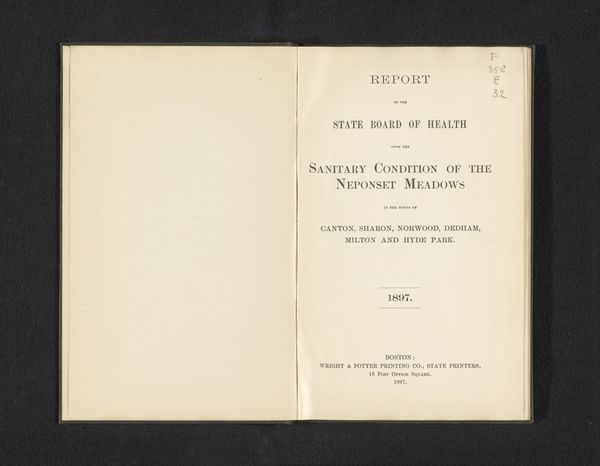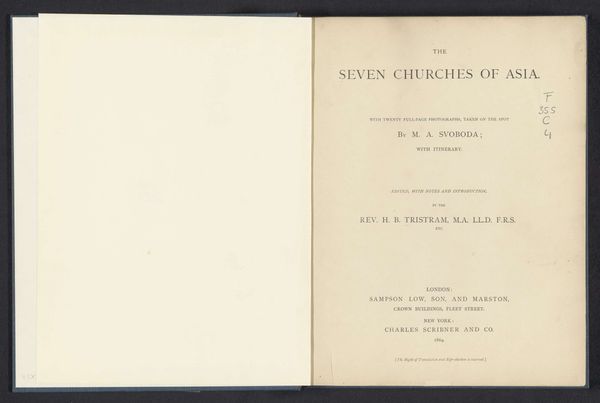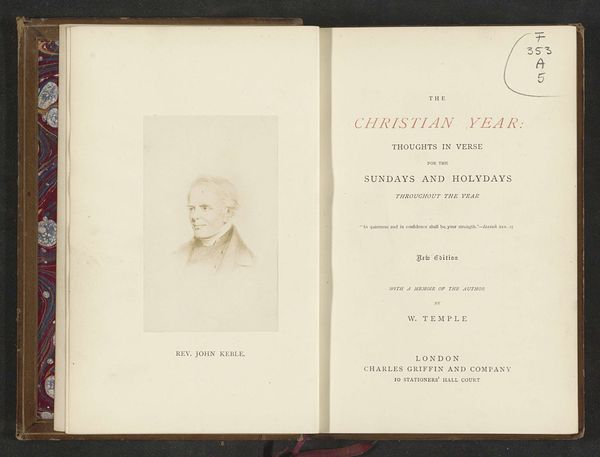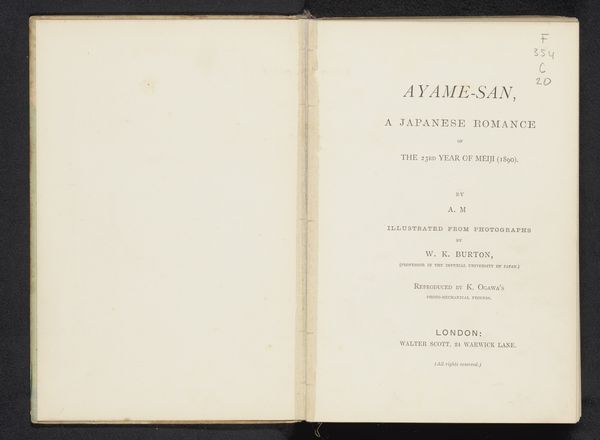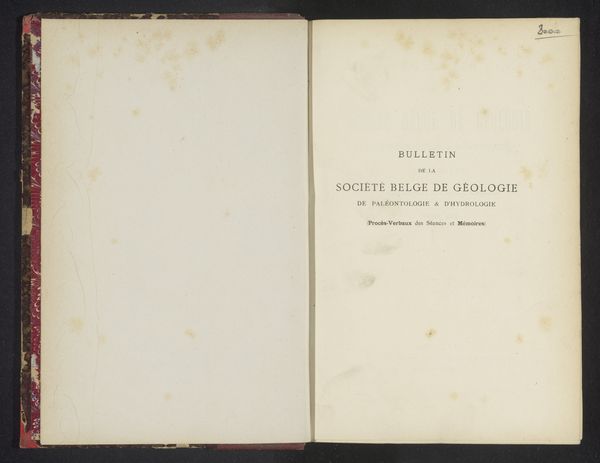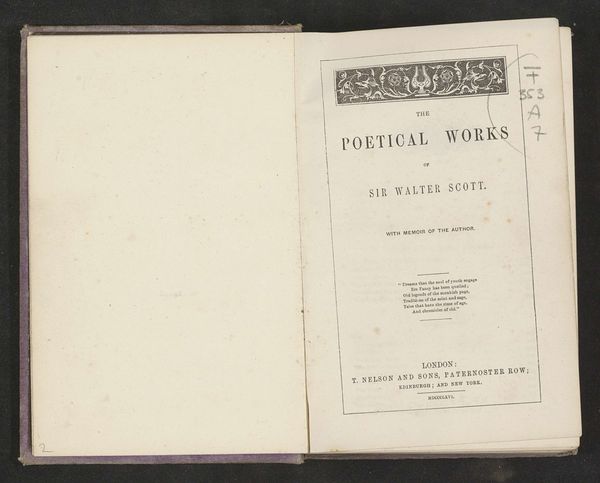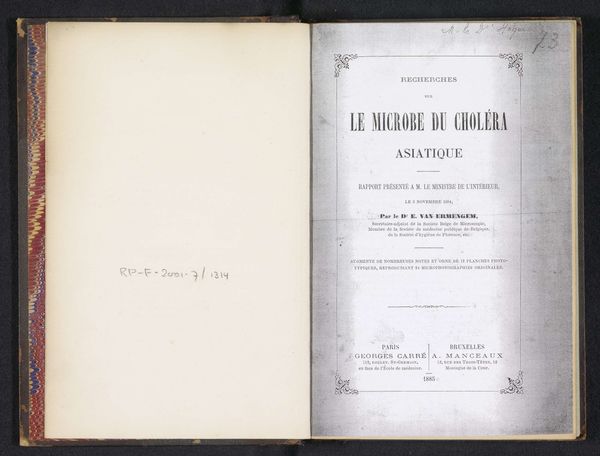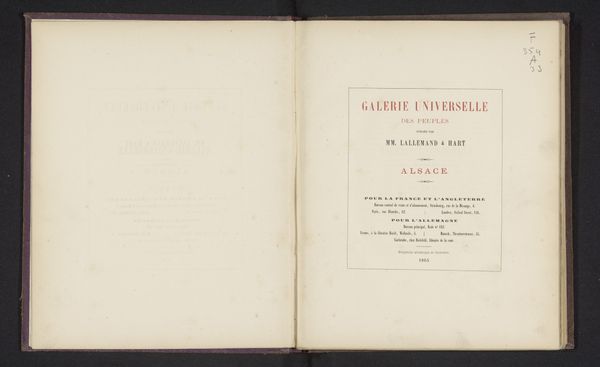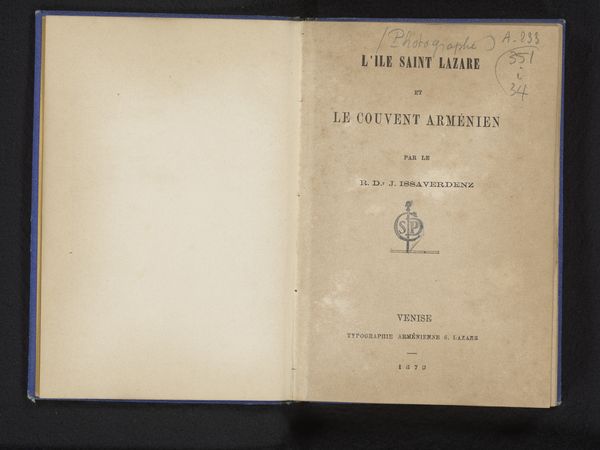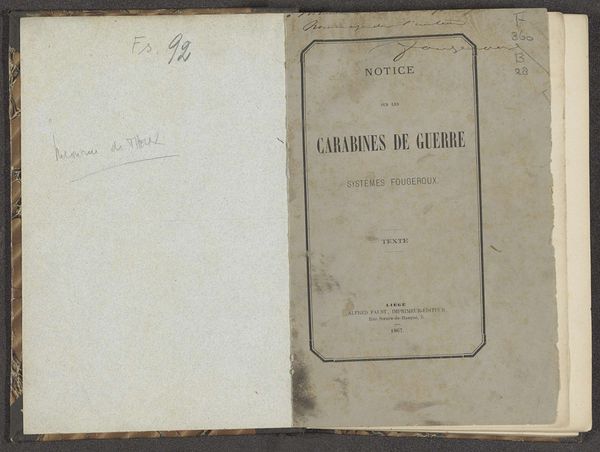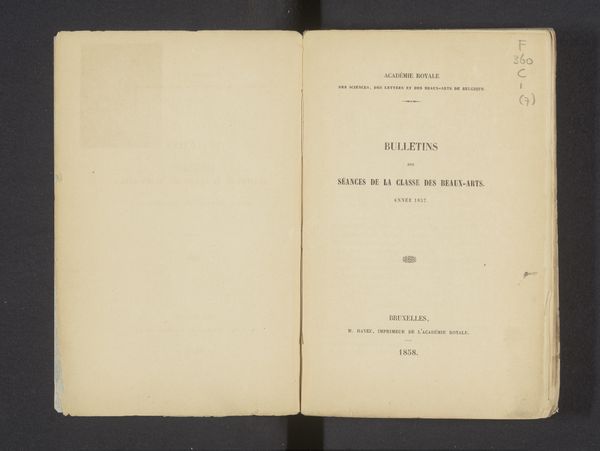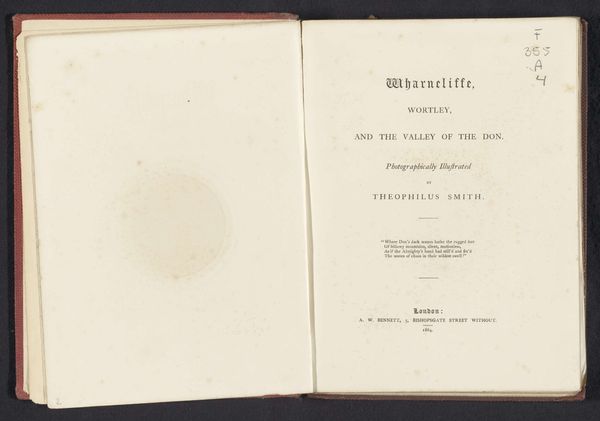
print, typography
# print
#
typography
#
decorative-art
Dimensions: height 210 mm, width 158 mm, thickness 39 mm
Copyright: Rijks Museum: Open Domain
Curator: Before us is "Of the Imitation of Christ in Four Books," a print from 1866 by Thomas à Kempis. It’s an early example of typography showcasing both decorative-art elements. What are your initial impressions? Editor: Well, immediately I'm struck by this quiet formality, almost austere. The use of simple red lines to frame the pages adds a subtle sense of containment, a space to ponder. It gives off that old-book smell vibe just looking at it! Curator: Indeed, the framework evokes the very constraints, both physical and spiritual, Kempis was grappling with. Printed during a period of intense religious revival, this work gained significant traction for its emphasis on personal piety amidst societal changes. Editor: Personal piety… so less about the grand pronouncements and more about interiority? You feel that in the design. There is a considered approach; the type is elegant yet straightforward. It makes me think about how public expression shapes inward reflections, don't you think? Curator: Absolutely! The symmetry in the typographic layout and ornamental detail points to how books, like this one, provided access to individualized forms of religious expression at the time. They facilitated these quiet acts of worship within domestic settings. Editor: So, imagine a parlor, someone quietly reading… a stark contrast to a booming sermon from a crowded church, I imagine? This work offers the idea of a self-built sanctuary – fascinating, and surprisingly human for such an old object. Curator: Precisely. The availability and relative accessibility of prints democratized religious thought in ways unimaginable before. This "Imitation" signifies a broader cultural shift toward individualism within organized religion. Editor: I get a sense that it is reaching towards something bigger. A conversation on paper. Thank you; looking closely here has brought an unusual kind of connection to then from here, now.
Comments
No comments
Be the first to comment and join the conversation on the ultimate creative platform.
